CheckMate: Your Checking Account
|
|
|
 Checking accounts let you pay for things with a check so you don’t have to carry lots of cash around in your purse or wallet. Checking accounts let you pay for things with a check so you don’t have to carry lots of cash around in your purse or wallet.
So, what is a check, you say? Technically, it’s a legal instrument in which you direct your credit union or bank in writing to pay someone a certain amount by taking money out of your checking account. Some credit unions refer to checks as "share drafts" or drafts.
There are advantages to paying with checks. For one thing, you create a written record of everything you buy.  Mailing a check is less risky than sending cash since anyone could take the cash and use it. Only the person who the check is made payable (or written) to can cash the check. Mailing a check is less risky than sending cash since anyone could take the cash and use it. Only the person who the check is made payable (or written) to can cash the check.
 You can "stop payment" on a check, which means you can tell your credit union or bank to not pay the check if, for example, you made an error in the amount or if the check was lost. You can "stop payment" on a check, which means you can tell your credit union or bank to not pay the check if, for example, you made an error in the amount or if the check was lost.
If you're ready to make your move and open a checking account, be sure to compare the service fees (for things like using another financial institution's ATM machine or bouncing a check), interest you'll earn on the funds in your account, and minimum balances the credit union or bank requires to open the account or to keep in the account to avoid monthly service fees. |
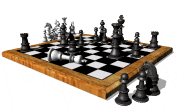 But before you say "checkmate" -- take a minute to consider the services of each financial institution: Is having a nearby branch location and/or extended hours important to you? Does the staff treat you like a real person and offer helpful suggestions? Can you get your questions answered quickly and accurately in person, over the phone or on their website? But before you say "checkmate" -- take a minute to consider the services of each financial institution: Is having a nearby branch location and/or extended hours important to you? Does the staff treat you like a real person and offer helpful suggestions? Can you get your questions answered quickly and accurately in person, over the phone or on their website?
So you're ready to open a checking account -- now what? Typically you open an account in person by filling o ut a new account application. The financial institution will want proof that you are who you say you are, so be prepared to show a photo ID such as a driver's license, passport, or student ID, your Social Security number, and address verification (a utility or phone bill with your address on it will work). ut a new account application. The financial institution will want proof that you are who you say you are, so be prepared to show a photo ID such as a driver's license, passport, or student ID, your Social Security number, and address verification (a utility or phone bill with your address on it will work).
You will be asked to sign a signature card that will be kept on file at the credit union or bank in cases where they'll need to verify that the signature on your check is really yours.
You can open a joint account with another person, which means he or she can write checks on the account, too. | |
|
|
|
Usually, you open your checking account by first depositing a certain amount of money. Each account has different rules to it. Some will charge monthly fees or even a fee per check. Some may pay interest if you keep a certain amount of money in the account.
Often a checking account is linked to a credit card account and/or a savings account. This means if there’s no money in your checking account, you can still write checks. The money will be taken out of your savings account or charged against your credit card as a loan. But beware of fees or interest charges on these -- and especially the danger of draining your savings!
When you open your checking account,the credit union or bank officer 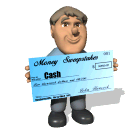 will give you some sample checks that you can use right away. Later you will pay to have your own checks printed with your name, address, phone number at the left corner, and the name of your credit union or bank at the bottom. Store your checks in a safe place. will give you some sample checks that you can use right away. Later you will pay to have your own checks printed with your name, address, phone number at the left corner, and the name of your credit union or bank at the bottom. Store your checks in a safe place.
You’ll also be given a check register. This is a useful tool to keep track of what you buy using a check, debit card or ATM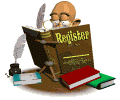 withdrawal as well as to log the money you deposit into your account by writing every item into this check register. You'll want to include service charges and interest, too. withdrawal as well as to log the money you deposit into your account by writing every item into this check register. You'll want to include service charges and interest, too.
You may be given a choice to have your checks returned to you in your statement or “truncated” (stored for safekeeping) at your 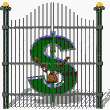 credit union or bank. You can always request a copy of the check or draft from your financial institution, and some offer check images online. Some even offer images of checks on your statement. credit union or bank. You can always request a copy of the check or draft from your financial institution, and some offer check images online. Some even offer images of checks on your statement.
The numbers along the bottom of a check are interesting. Printed in machine-readable magnetic ink, they show how the check will be routed through the Federal Reserve System. |
The first eight numbers identify your credit union or bank and the Federal Reserve branch and are called the routing/transit number. The ninth digit is used to verify all the other numbers are correct and is called a check digit. Your account number follows, along with the check number (that also appears in the upper right hand corner of your check).
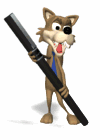 When you buy something, you write your check in pen (never pencil, which can be erased and changed). To fill out a check, first enter the correct date. Then, where it says ”Pay to the order of,” you write the name of the business or person you want paid, such as Pay to the order of “Engineer Ed” or the “Reading Railroad.” Don't make out a check to "Cash" or "Bearer" or leave it blank since anyone could cash it. When you buy something, you write your check in pen (never pencil, which can be erased and changed). To fill out a check, first enter the correct date. Then, where it says ”Pay to the order of,” you write the name of the business or person you want paid, such as Pay to the order of “Engineer Ed” or the “Reading Railroad.” Don't make out a check to "Cash" or "Bearer" or leave it blank since anyone could cash it.
Carefully write the amount of the check in numbers. You'll write in the amount on the line that ends in the word “dollars” using old-fashioned legal words. For example, if you are paying $1.21, you write: “One and 21/100ths (dollars). If it’s $2,432.20, you write: "Two thousand four hundred thirty-two and 20/100ths” (dollars).
Then you sign your name on the signature line. Usually a store or business will want identification such as a picture ID or a driver’s license.
You endorse a check when you want to cash it or deposit it into your account. In this case, the check is made out to you by someone else, such as your employer. You endorse it by signing your name on the back as close to the top as possible.
People used to pay for everything with cash. Then people began using checks in 1865. With the advent of debit and credit cards, plus the convenience of telephone and online banking, we’re moving to a cashless society, as well as a checkless society. But don’t count on a checkless society any time real soon – in 2002, 42.5 billion checks were written in the U.S.
See what you learned.
Check out "Saving for a Rainy Day" | |   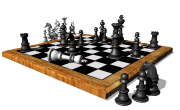  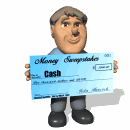 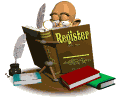 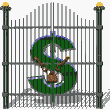   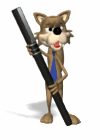 |
Did this answer your question?